On March 3 every year, families with baby girls in Japan will hold the Hinamatsuri festival to pray for the baby girl to grow up healthy and happy.
Besides decorating Hina dolls, enjoying traditional dishes together is also an indispensable ritual on the festival day.
“What specifically do Japanese people eat on Hinamatsuri?”
“The dishes are very beautiful and colorful, so what is their meaning?”
In this article, I will introduce 7 traditional dishes eaten on Hinamatsuri and the meaning of each dish.
Please read through to better understand this interesting holiday.
Hishi-mochi (菱餅)
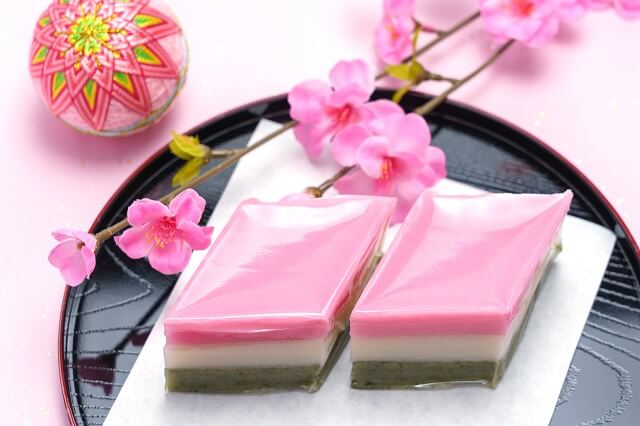
Hishi-mochi is considered a symbolic dish of the Hinamatsuri festival.
Hishi-mochi is made up of three layers of diamond-shaped sticky rice cake colored pink, white and green. Each color has its own meaning.
Pink helps ward off evil spirits, white symbolizes purity, and green represents health and longevity.
From another perspective, Hishi-mochi also symbolizes the vibrant life of nature because the color of the cake reminds of the image of young shoots (green) sprouting under a layer of cold snow (white) and bloom into flowers (pink) when spring comes.
People eat Hishi-mochi at the Hinamatsuri festival to wish baby girls grow up safely and steadfastly in life.
Hina Arare (ひなあられ)
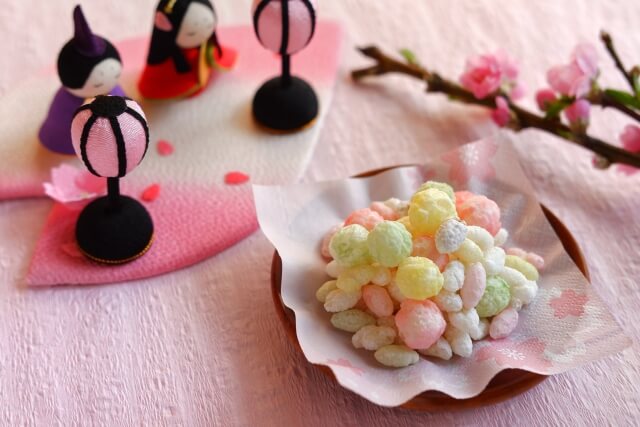
Hina Arare is also a typical dish when mentioning the Hinamatsuri festival.
Hina Arare is rice cracker.
Hina Arare has 4 colors: pink, green, yellow and white, symbolizing the four seasons of Spring, Summer, Fall and Winter.
Depending on the locality, the shape and flavor of Hina Arare will be different.
If the Hina Arare of the Kantō region is only the size of a grain of rice and has a sweet taste, the Hina Arare of the Kansai region is larger and has a salty taste due to being soaked in soy sauce or salt.
Hina Arare rice cracker is eaten during the Hinamatsuri festival with the hope that girls will receive energy from nature and live happily throughout the four seasons of Spring, Summer, Fall, and Winter.
Sakura-mochi (桜餅)
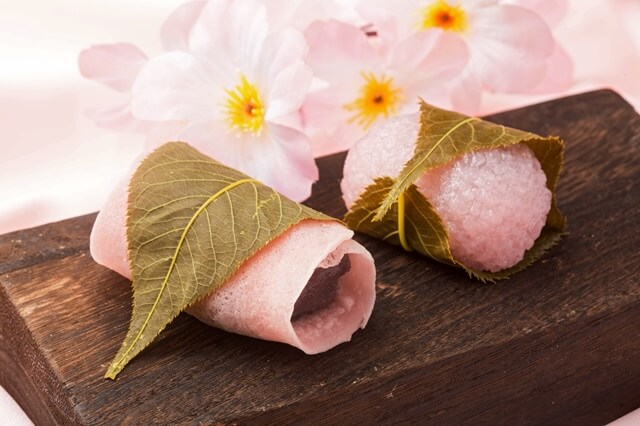
Sakura-mochi is a traditional Wagashi cake, with a pink crust and rolled salted cherry leaves on the outside.
The reason why Sakura-mochi cake became a dish associated with the Hinamatsuri festival is said to be because the pink and green colors of the cake match the spring festival atmosphere.
There is also a theory that eating Sakura-mochi on Hinamatsuri (girls’ festival) is a ritual that parallels the eating of Kashiwa-mochi (*) on Kodomo-no-hi (boys festival).
The interesting thing about Sakura-mochi is that although it has the same name, the ingredients and shape of the cake in the Kanto region and the Kansai region are completely different.
While the Kanto region’s Sakura-mochi is made with wheat flour and rolled into a crepe-like shape, the Kansai region’s Sakura-mochi is made from glutinous rice flour and rolled into a ball.
(*) Note: Kashiwa-mochi (柏餅) is also a type of Wagashi cake, similar in shape to Sakura-mochi cake but white in color.
Chirashi-zushi (ちらし寿司)
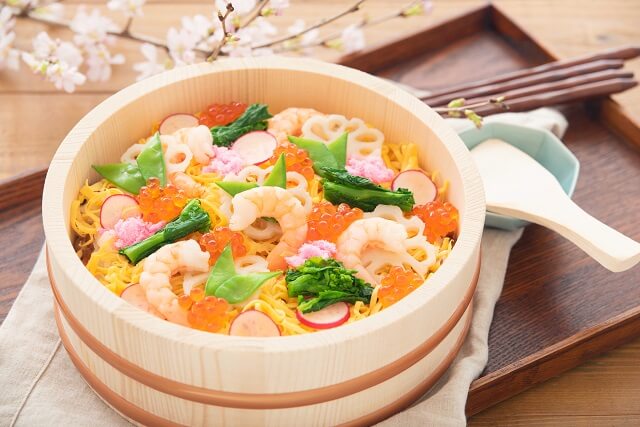
Another dish that also represents the Hinamatsuri festival is Chirashi-zushi.
Chirashi-zushi is bowl-shaped sushi with vinegared rice underneath and colorful toppings sprinkled on top.
Depending on the locality, the food ingredients will change, but basically they are all dishes with auspicious meanings such as shrimp, lotus roots, etc.
Shrimp symbolize longevity because the shrimp’s back is curved like an old man’s, and the lotus root symbolizes a promising future because the lotus root has many holes that can be seen through to the other side.
Beautiful and meaningful, Chirashi-zushi is the perfect dish to wish for the growth and happiness of little girls.
Temari-zushi (手まり寿司)
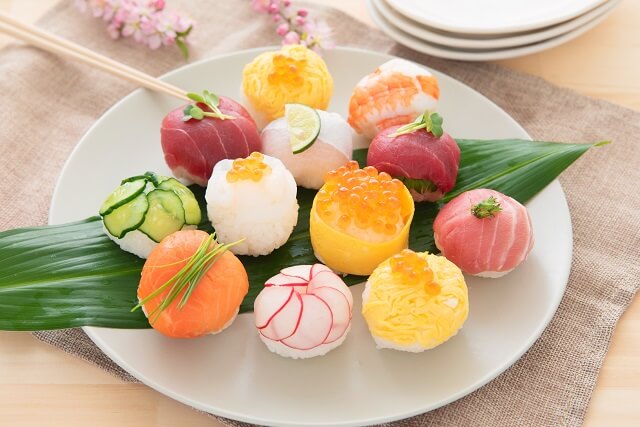
Temari-zushi is round sushi that simulates the shape of a Temari sphere – a traditional Japanese toy.
Temari-zushi was born in Kyōto, so it is also called Kyō-zushi.
Temari-zushi is specially designed (round shape + small size) so that Maiko girls can easily eat it without smudging their lipstick.
Initially, Temari-zushi was not a dish on Hinamatsuri day, but thanks to its beautiful appearance and small size that is easy to eat even for children, it is eaten more and more on the festival day.
Clam soup (はまぐりのお吸い物)
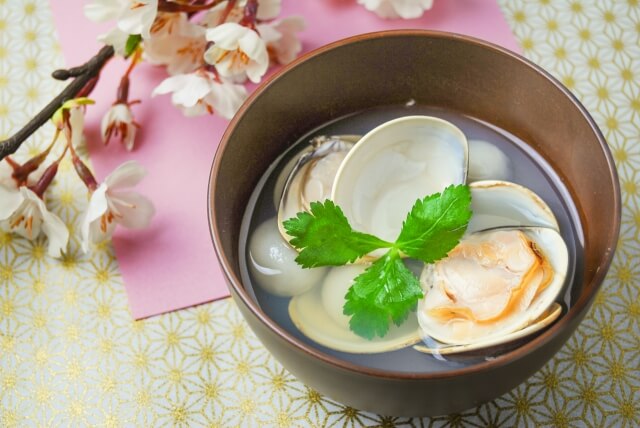
Clam soup is an indispensable dish at the Hinamatsuri festival.
Two tightly closed clam shells symbolize harmony between husband and wife and a perfect marriage.
Clam soup is eaten on festival days with the hope that when girls grow up, they will meet a wonderful partner and have a happy life.
Shirozake (白酒) and Amazake (甘酒)
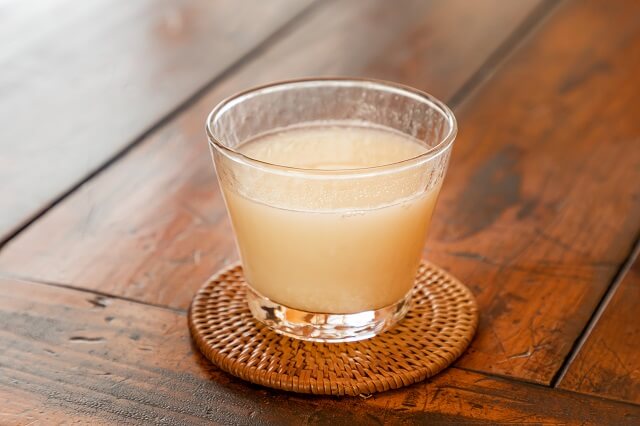
Shirozake (a type of sake) and Amazake (sweet sake) are two traditional drinks at Hinamatsuri festival.
Both types of sake are basically made from rice, but Shirozake is alcoholic so it is only for adults, and Amazake is non-alcoholic so children can also drink it.
Ancient Japanese people believed that drinking Shirozake or Amazake on festival days would help ward off evil spirits and purify the body.
This custom still prevails to this day.
Conclusion
Hishi-mochi, Hina Arare, Chirashi-zushi, etc., although different in form, are all beautiful and carry the meaning of wishing the baby girl to grow up safely and happily.
Understanding the meaning of the dishes not only helps you have a deeper insight into the Hinamatsuri festival, but also helps you experience the dishes more interestingly when you have the opportunity to enjoy them directly.
All of the dishes mentioned in this article are the most typical dishes of the Hinamatsuri festival so they are easy to find and buy.
If you are also in Japan during the festival, definitely try it.

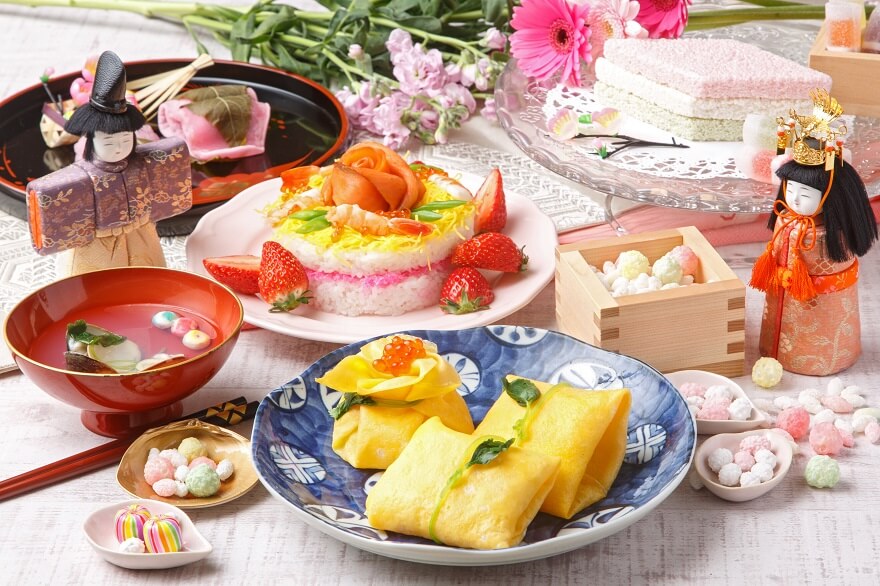
Comment